Spring arrives slowly but surely in Connecticut. Daffodils and tulips begin to poke up from the thawing ground, and crocuses begin to appear alongside melting snow. Dogwoods and forsythia burst into bloom, adding welcome hues to the landscape. And all across the state, homeowners rush to prepare their lawns and gardens for the warmer weather.
Connecticut has a robust number of farmers raising flowers, shrubs, and other plants that can help you breathe new life into your landscape, create enticing displays within your home, and add beauty to your special occasions. Spring is a busy time for these producers, who make up the largest share of Connecticut’s agriculture.

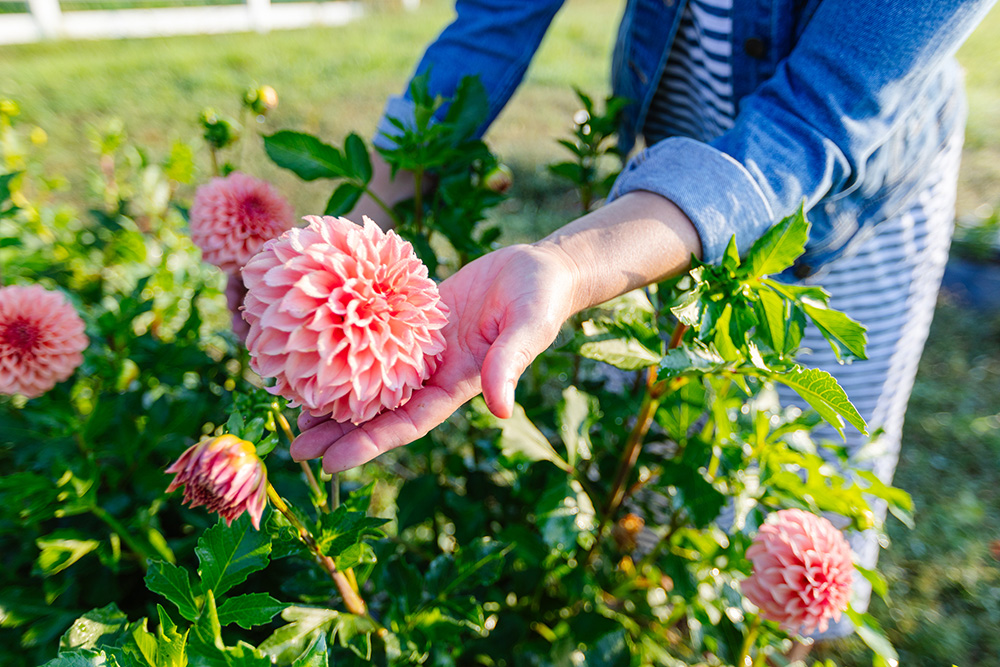
In this blog, we explore how Connecticut’s greenhouses, nurseries, farms, and garden centers are excellent places to visit during the spring. Whether you’re looking to improve your home or simply want a memorable experience, you’ll find something that’s right for you.
Greenhouses, nurseries and garden centers
Throughout the winter, Connecticut’s greenhouse and nursery producers have been busy sowing seeds, potting plants, and preparing to assist customers in the new growing season. By visiting a CT Grown greenhouse or nursery, you’ll receive:
- Expert guidance: Whether you’re trying to liven up a shady spot or need advice on growing a specific plant, greenhouse and nursery producers can offer expert advice and care plans tailored to your own property.
- Educational opportunities: The spring season often brings workshops and other educational opportunities at greenhouses and nurseries. Attendees can learn about seed starting, container gardening, composting, and much more.
- Great deals: To encourage people to pursue the big plans they have for their garden, nurseries and landscapes may offer discounts or open up loyalty programs at the beginning of the spring season. Take advantage of these to enjoy savings throughout the year.
- New inspirations: A visit to a garden or nursery can inspire a new vision for your home. Discover new plant options and features that can transform your rooms or landscaping.
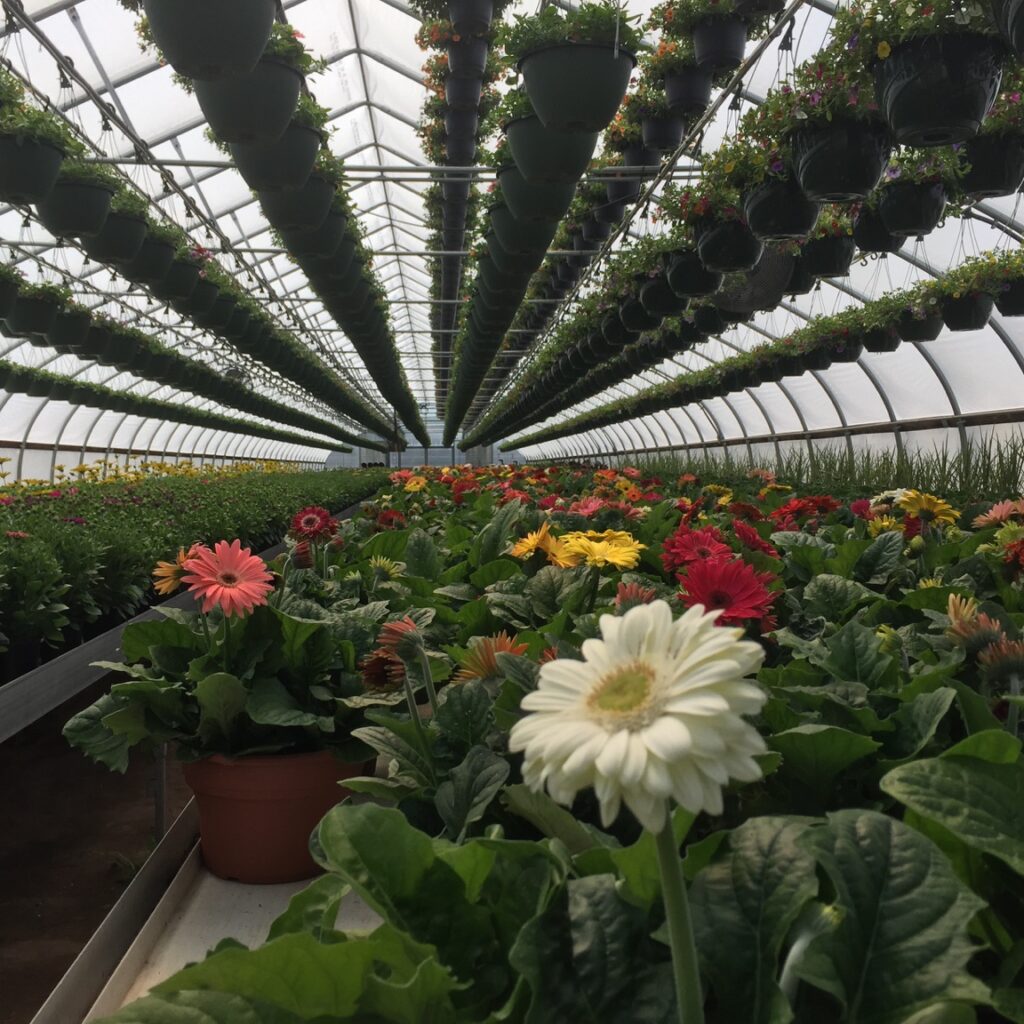
There’s no shortage of products available at greenhouses and nurseries to get a jump on the year’s gardening plans, including:
- Annual flowers: Although annuals only last a single season, they add a welcome pop of color to your garden and are easy to care for. Some of the annuals available in spring include Easter lilies, impatiens, marigolds, pansies, and petunias.
- Perennial flowers: Perennials return year after year, making them an easy option for long-term garden planning. Some spring perennial choices include coneflowers, daylilies, and hostas.
- Shrubs: A useful choice for boundaries or privacy barriers, shrubs can also create beautiful landscaping and support pollinators when you choose flowering varieties like butterfly bushes, hydrangeas, and viburnums.
- Fruiting trees: Add a small orchard alongside your vegetable garden using varieties like apple and cherry trees.
- Vines: Transform vertical surfaces into part of your garden using vining plants like clematis and honeysuckle.
- Vegetable starts and seedlings: Plants that have been sown indoors — including eggplants, herbs, peppers, and tomatoes — let you get a jump on the year’s harvest.
Walk-through flower experiences
Some farms in Connecticut give visitors an up-close look at the returning floral landscape by offering walk-through experiences. Visitors can stroll through the fields and marvel at the spectacle of thousands of flowers in bloom together.
In a relaxing, meditative experience, visitors are surrounded by the visual beauty and delightful scents of a sea of flowers. These scenes are also a popular photographic backdrop for everything from family portraits to engagement shots.




Walk-through flower experiences are often paired with pick-your-own options that let you take home a beautiful bouquet. Some options in Connecticut include:
- Halfinger Farms (Higganum): Every year, “Dancing Daffodils” at this farm lets visitors visit a field of these brilliant yellow flowers and pick their own selection. Halfinger Farms hosts several special events alongside the daffodil season, while also raising additional flowers such as peonies, violas, and mums.
- Lavender Pond Farm (Killingworth): Denise Salafia established this farm as a tribute to her mother, who died of breast cancer. Today, it invites visitors to walk through the fields as thousands of lavender plants come into bloom.
- Wicked Tulips (Preston): One of three locations growing a total of more than 1.5 million tulips, Wicked Tulips gives visitors the one-of-a-kind experience of walking through a vast field of these flowers during their brief but awe-inspiring time in bloom.
- Willow View Farm (West Suffield): Along with thousands of ornate dahlias, this farm lets visitors pick a selection of varieties that include daffodils, peonies, and tulips.
Cut flower CSAs
Community Supported Agriculture (CSA) programs go well beyond the traditional shares of fruits and vegetables, and Connecticut’s thriving floriculture businesses mean that there are plentiful options to find cut flower CSAs. Farms may offer these options either on their own or as an optional add-on to another CSA.

Spring flower CSAs are an excellent choice for people who can’t wait to get fresh flowers back into their home after a long winter. These feature seasonal flowers such as alliums, anemones, canterbury bells, daffodils, hyacinths, narcissus, ranunculus, and tulips. Farms often grow specialty varieties that aren’t usually found in stores, allowing each farm to create bouquets with a distinctive look.
Cut flower CSAs continue into summer and autumn, with each new share changing based on what’s in season. Some farms may also offer these CSAs into the winter, featuring greenhouse-grown flowers.
To find a cut flower CSA near you, visit the CT Grown map.
Getting some CT Grown products into your daily diet is easier than you might think. Here are 10 ways you can include CT Grown on your plate each day.
1. Look local for your morning eggs
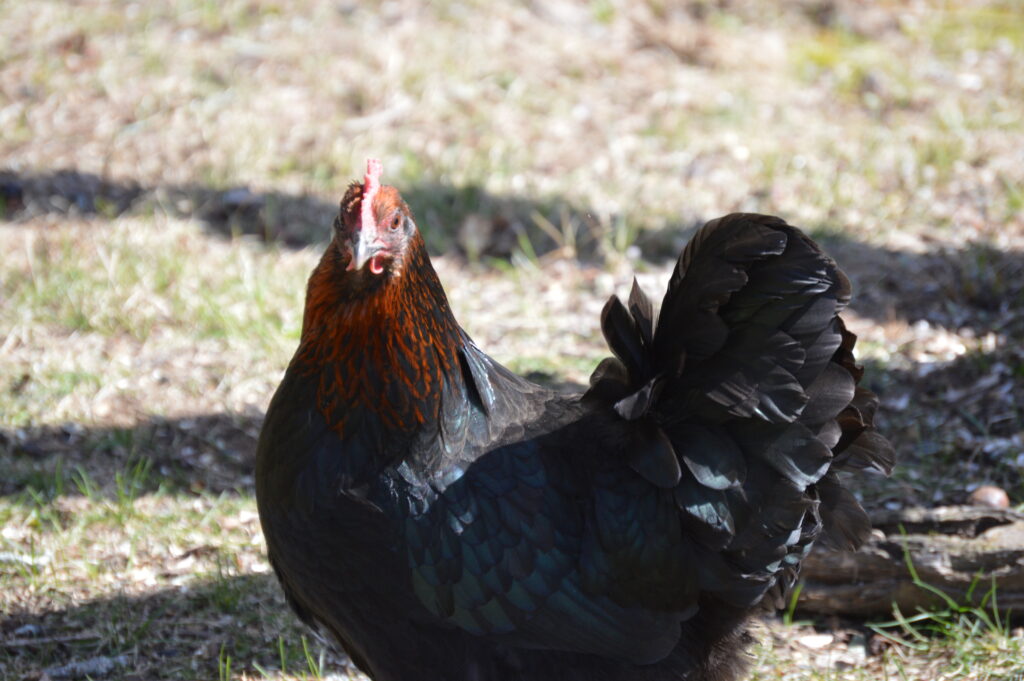
If you like to cook up an omelet to get you going in the morning, take a look around your neighborhood to see where you might be able to pick up some fresh eggs. Many farms keep small flocks of chickens, and offer eggs at their farm store. Connecticut also has several large egg producers, selling products under brands like Eggland’s Best, The Farmers Cow, and Hillandale Farms.
2. Sign up for a dairy delivery
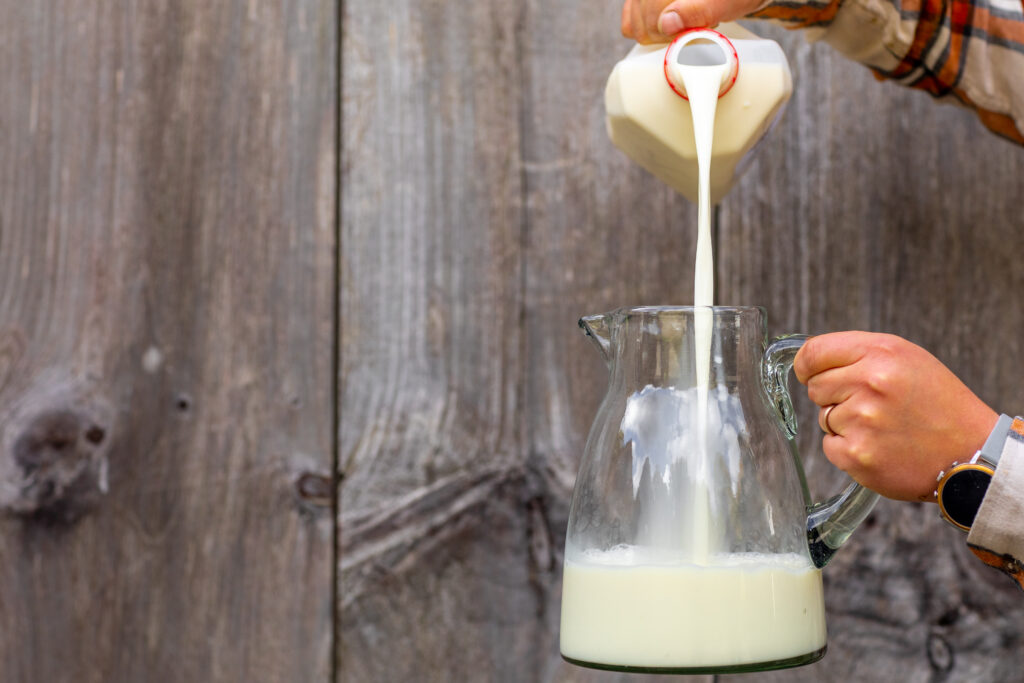
Several Connecticut dairy farms are working to bring the milkman back to our neighborhoods. You can find options for delivery services that bring fresh supplies of milk, yogurt, and cheese right to your doorstep. Some farms pair this offering with other CT Grown products, making it even easier to get your groceries and support your local farmers.
3. Pack a CT Grown apple for lunch
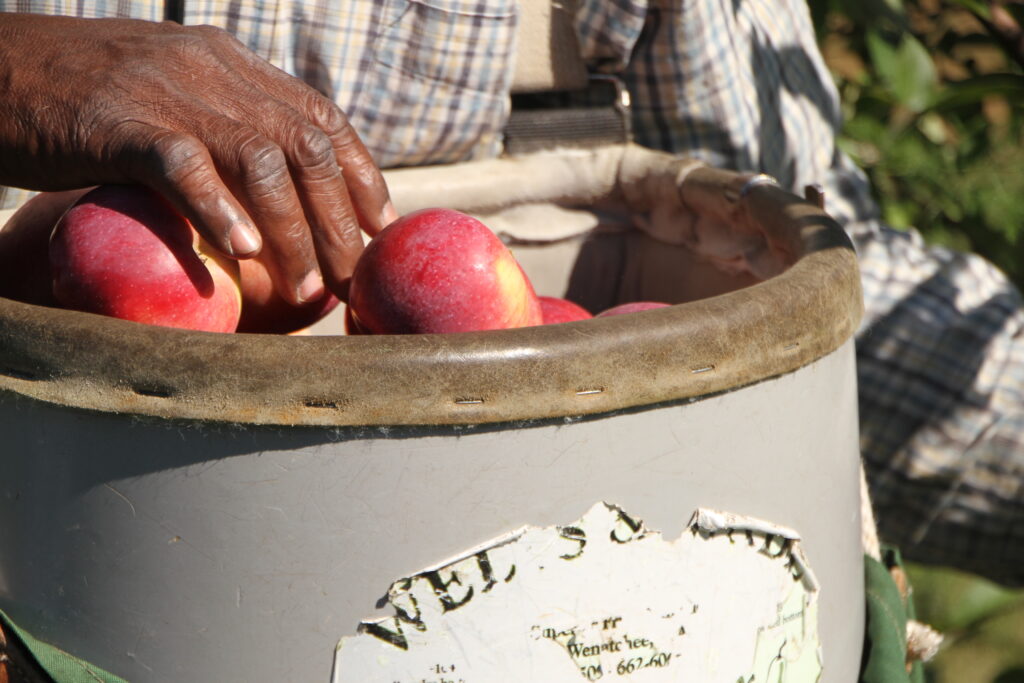
More than 2,000 acres in Connecticut are dedicated to growing apples, and bountiful harvests of this fruit are readily available from July to October. Visit an orchard to pick your own apples, then pack an apple with your lunch each day. Since apples store well, you can continue to find fresh apples from orchards throughout the winter and into the early spring.
4. Look for locally sourced items at your favorite restaurant
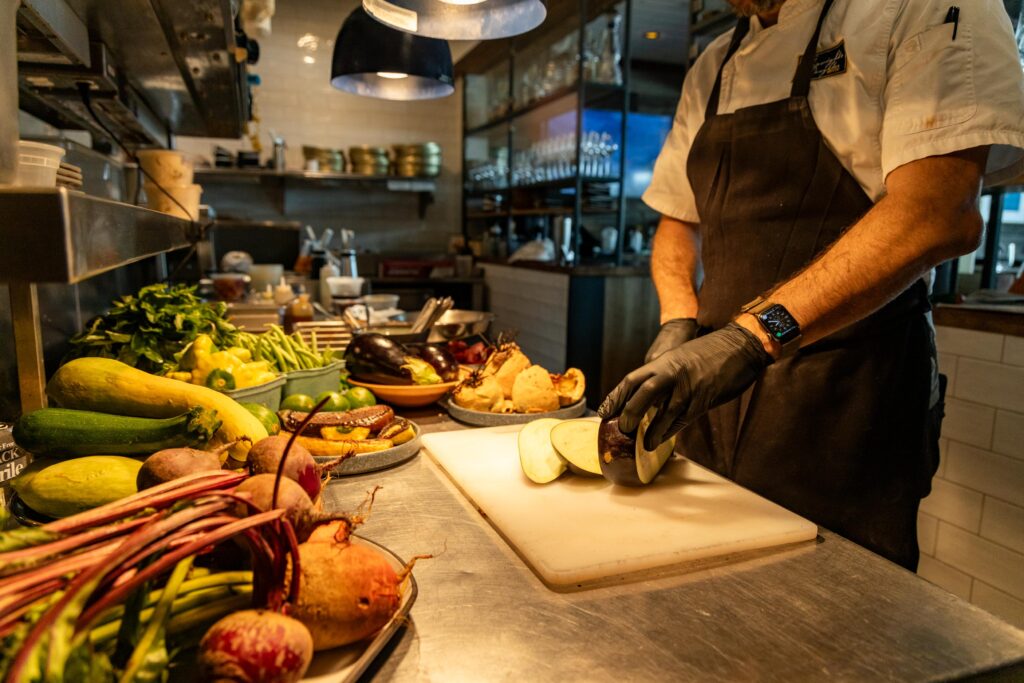
Several restaurants in Connecticut commit to partnerships with local farms to acquire seasonal items and staples such as dairy, meats, and shellfish. When local food is on the menu, you can enjoy fresh, seasonal items and discover delicious new varieties and cuts.
Be sure to check out CT Farm-to-Chef Week from September 9-16, 2023. This annual occasion showcases venues that use CT Grown food for their dishes and beverages, giving you a chance to discover new eateries with a farm-to-table commitment.
5. Find CT Grown when grocery shopping
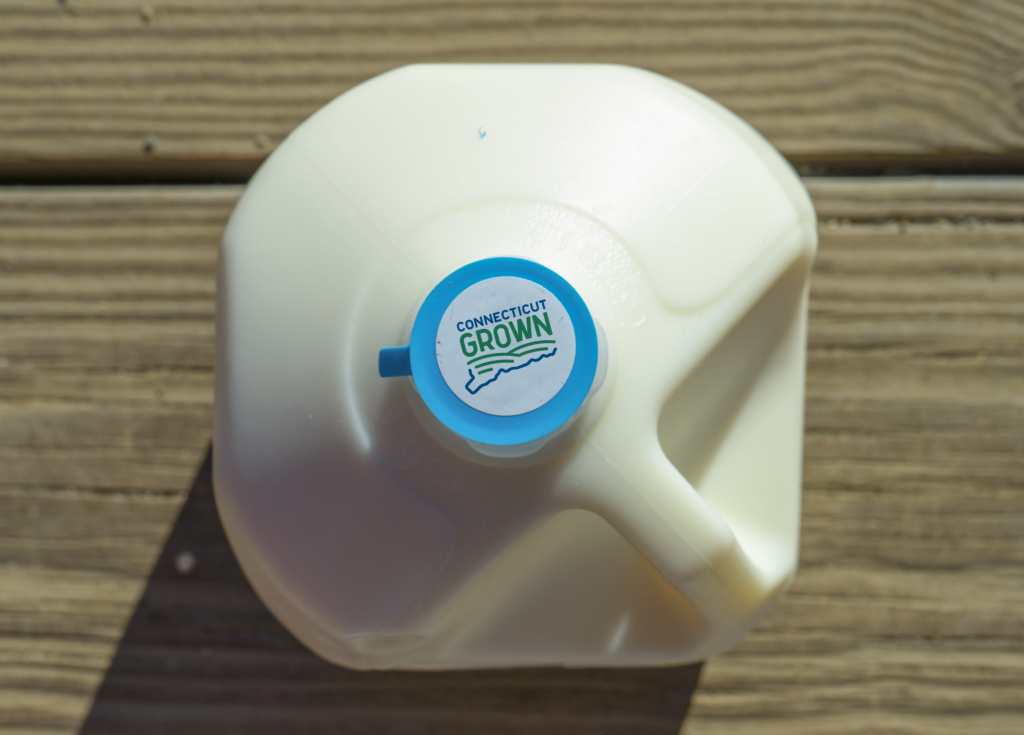
Connecticut farms often partner with wholesalers and retailers to make their products available at local grocery stores and food co-ops. Look for the CT Grown logo to find food items that are produced locally. Some stores also feature special displays to showcase value-added products from Connecticut producers, such as honey, sauces, maple syrup, and salsas.
6. Make a local farm your meat market
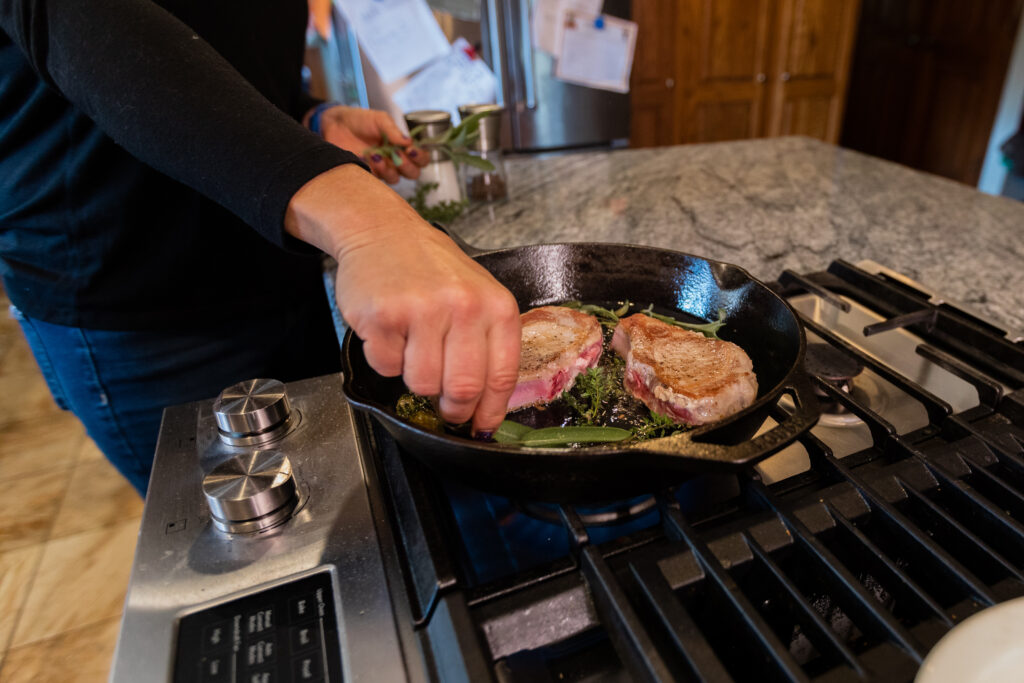
Connecticut farms raise a wide variety of meats, including beef, pork, chicken, turkey, and even specialty items like bison and emu. A visit to one of these farms not only lets you discover new cuts, but also gives you the option to purchase large shares of meat to freeze for future meals.
7. Stock up on local wines

Connecticut is home to 45 licensed farm wineries featuring scenic vineyards and beautiful tasting rooms. In addition to picking up local options when shopping for wine, you can also sign up for a membership, wine club, or Adopt-A-Vine program that lets you regularly pick up new vintages or enjoy discounts when you visit a winery.
8. Use pick-your-own for your baking needs

Pick-your-own farms give you a chance to get out in the fields and orchards to select fresh seasonal items like apples, berries, peaches, pears, and pumpkins. Farms invite visitors to purchase these products in bulk, and you can put these larger quantities to good use with mouthwatering baking options like pies, breads, and muffins that use locally sourced ingredients.
9. Become a regular at the farmers’ market

By visiting a farmers’ market each week for some of your grocery shopping, you can discover new varieties of produce, custom cuts of meat, homemade sauces and jams, and much more. You can also talk directly with local farmers to get advice on how to best prepare and store your food.
10. Start researching CSAs now
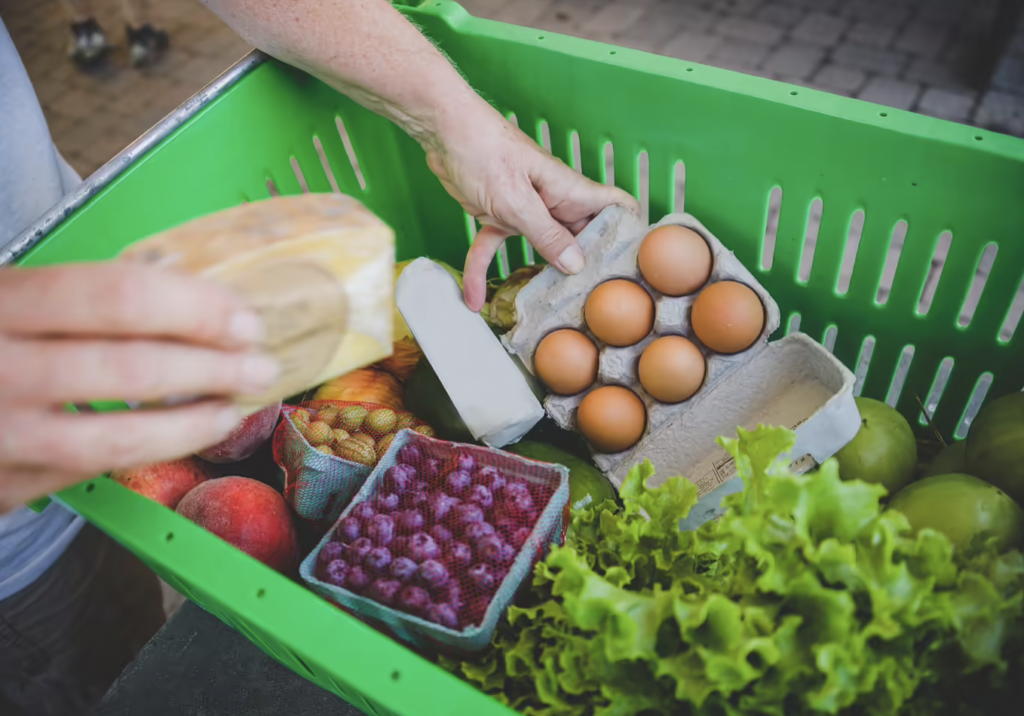
Many farms participate in Community Supported Agriculture (CSA) programs, where you purchase a portion of a farm’s harvest in advance and regularly pick up shares of fresh produce during the growing season; CSAs are also available for products like flowers, meat, and cheese. Farmers begin welcoming sign-ups for CSA programs at the beginning of the year, but you can start looking into options near you to find one that fits your needs.
“I don’t think I need a box of vegetables every week.”
It’s a leading concern we hear from people who aren’t sure if they’ll benefit from joining a CSA (Community Supported Agriculture) program. They worry that their CSA will have more vegetables than they can use each week (or that it won’t have the kind of produce they’ll use), resulting in wilted vegetables and lost money.
Rest assured, CSAs aren’t just limited to boxes of vegetables; there are options available for a wide variety of products, including meat, flowers, and seafood. Just like traditional CSAs, they allow CT residents to enjoy fresh food, get to know their local farmers and producers, and enjoy member perks while supporting Connecticut’s agricultural economy.
CT Grown farmers have also improved the flexibility of their CSAs in key, innovative ways. Read on to find out about the different types of CSAs that can fit your lifestyle.
Meat CSAs
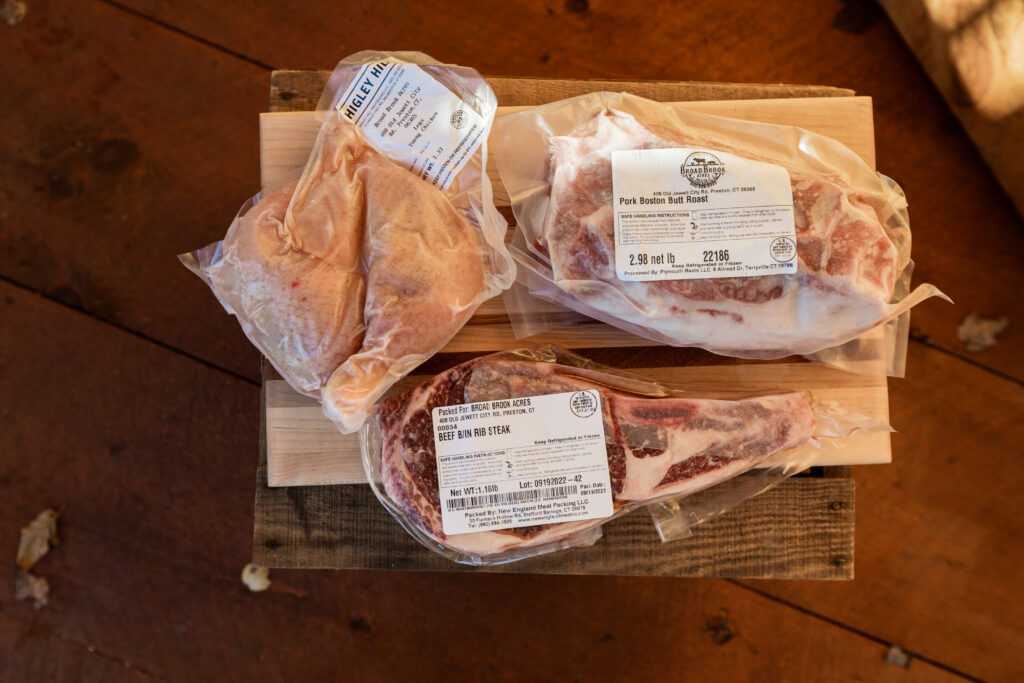
Across Connecticut, livestock farmers are raising thousands of animals from the traditional beef, poultry, and pork to a bit more exotic such as bison and emu.
While traditional CSAs provide different types of vegetables, meat CSAs offer a variety of meat cuts such as chops, sausages, ribs, roasts and ground meat. The program may provide a few pounds of meat every week, or monthly pickups with a larger selection.
CT Grown livestock producers are open to sharing the sustainable practices they use to raise their animals. Some practices include grass-fed diets, pasture-raised practices which are said to yield a higher nutritional value and better taste.
Meat CSAs can work particularly well for those who are worried that their CSA shares will be inconsistent or that they will let food go to waste. Since meat CSAs are based on weight, you’ll be guaranteed a set amount of food with each share. Any meat you don’t use can be stored in the freezer until you need it.
Community Supported Fisheries (CSF)

Similar to meat CSAs, Community Supported Fisheries (CSF) programs let you enjoy fresh seafood soon after it has landed on Connecticut’s shores. In exchange for your upfront payment, you’ll get regular shares of aquaculture products like fish, shellfish, and kelp.
CSF programs work to make these products available to the consumer as quickly as possible. Seafood is purchased from local fishermen, then processed and made available for pickup.
While traditional CSAs help farmers cover the costs of each new growing season, CSFs help CT Grown aquaculture producers to pay for expenses like boat repairs and the purchase of new gear.
Flowers and seeds
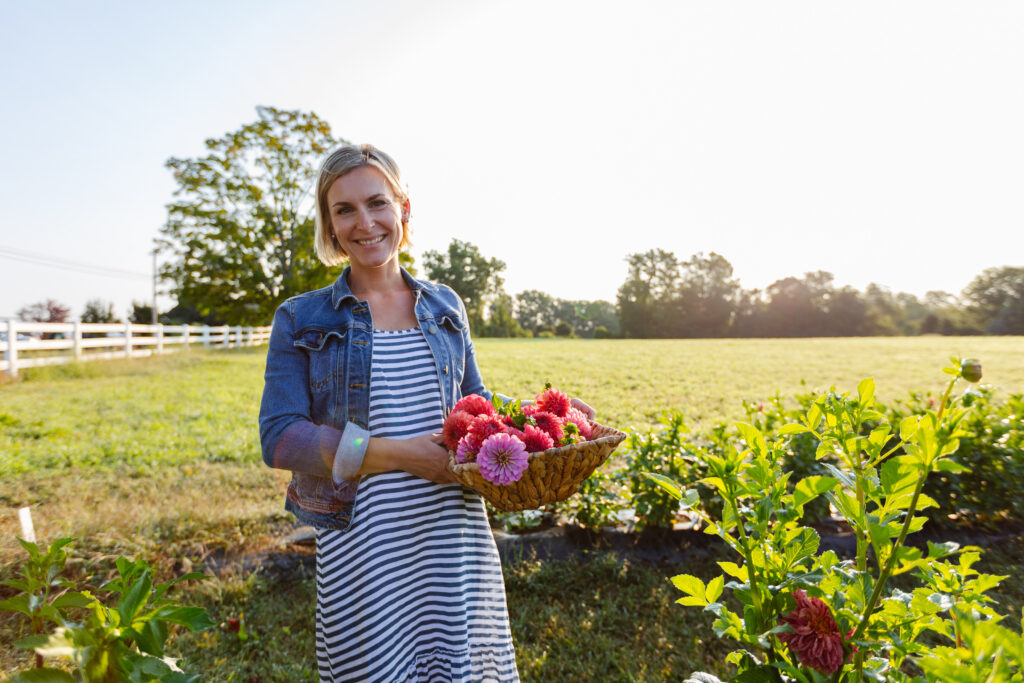
Countless families have picked up locally produced flowers to add beauty and fragrance to their home. If you want to keep these displays as a more consistent part of your home decor, you might consider a flower CSA.
Flower CSAs offer bouquets of flowers with an ever-changing variety based on what’s in season. You may have the option of picking your own flowers, and some CSAs even provide seed packets so you can grow additional lovely blooms in your own garden.
This type of CSA gives you the freshest flowers possible, since you’ll be getting them directly from the farm. It can also be a good option for those looking to try out a CSA for the first time, as flower CSAs tend to be less expensive and cover a shorter span of time.
Subscriptions and customizable shares
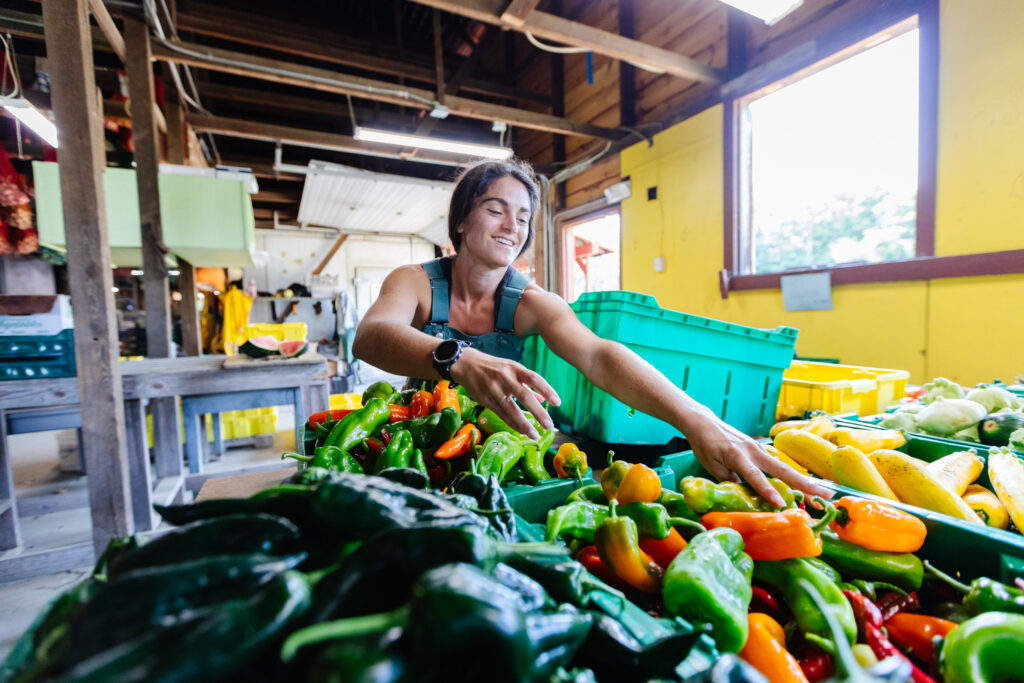
Farms can offer programs that are similar to CSAs but provide more opportunities for flexibility and customization. Vegetable subscription boxes let you choose how frequently you receive your produce and how many weeks your subscription will run. CSAs also may have a “market style” setup, allowing you to pick and choose what you’d like to take home.
Programs may involve collaborations between multiple producers in order to provide a range of goods. Some Connecticut dairy farms have started subscription delivery services that not only bring milk to your doorstep, but also goods like eggs, granola, and breads.
If you frequently use a certain commodity, you may find a farm offering a CSA exclusively for this item. These specialty CSAs include items like bread, cheese, eggs, honey, maple syrup, milk, and mushrooms.
CSAs sometimes invite you to pick your own produce as part of the experience. Instead of getting a preselected portion of fruits or vegetables, you might be invited to head into the fields to take your pick of items like berries, flowers, herbs, hot peppers, snap peas, or tomatoes.
To learn more about how CSAs work, visit our previous blog. To find a CSA near you, visit this map.
Everything You Need to Know About Connecticut CSAs
Farmers may be less visible during the winter months, but that doesn’t mean they aren’t hard at work. Some, like dairy and livestock farmers, continue to bring products to stores and markets year-round. Those that rely primarily on crop sales spend the winter buying seeds, upgrading equipment, and otherwise preparing for the growing season.
One innovative way to support CT Grown farmers during the winter is to purchase a share in a Community Supported Agriculture (CSA) program. Many farms in Connecticut begin opening these programs for signups at the start of the year.
CSAs are beneficial to both farmers and consumers. By purchasing a share of the upcoming harvest in advance, you can help sustain a farm’s cash flow and ensure that it is well-prepared for the season ahead. You’ll also enjoy a better understanding of how your food is grown, a closer connection with your local farms, and consistent access to fresh produce, proteins and flowers.
Each farm has its own unique way of offering a CSA. This guide will help you to understand the program and how it can help you to support local farmers and eat healthier foods.
How does a CSA work?
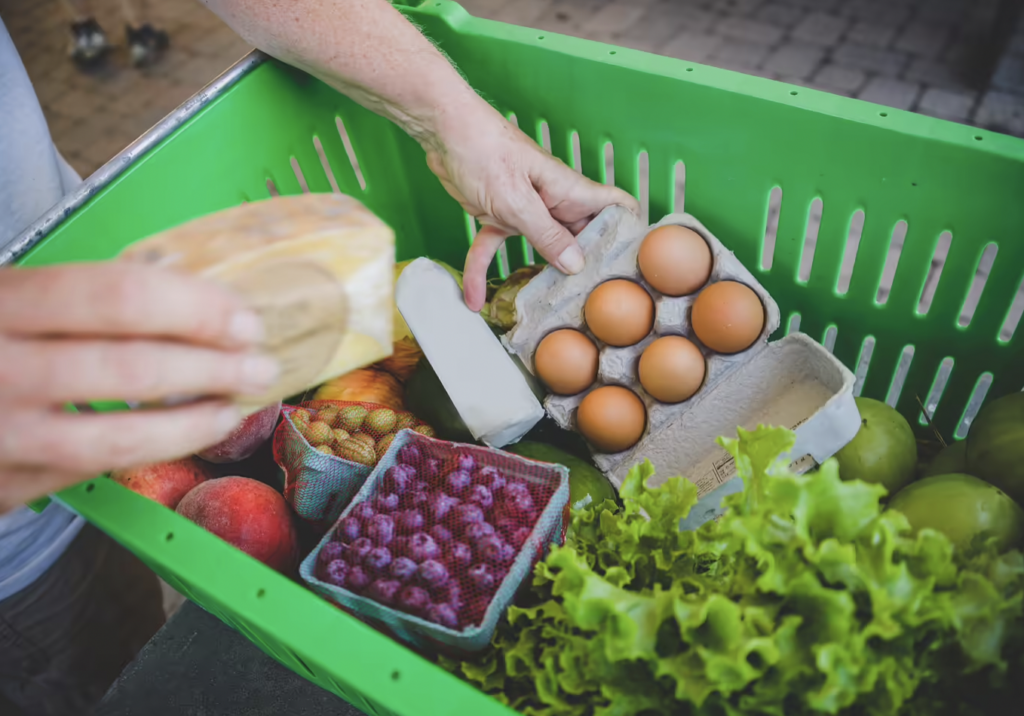
CSAs follow a simple shareholder model. By paying in advance during the winter, you purchase a share of the farm’s crop during the upcoming season. You receive your share on a weekly or biweekly basis, over the course of several weeks or the full growing season.
Only a limited number of shares are available, with the idea that this will create a closer relationship between farms and shareholders. By communicating with shareholders about their preferences, farmers can also be better prepared for the growing season ahead.
Why should I sign up for a CSA?
There are numerous benefits to signing up for a CSA. These include:
- A regular supply of fresh CT Grown fruits, vegetables, and other products
- Produce that retains more of the nutrients present at harvest, since it spends less time in transit or storage
- Getting introduced to new foods which you may not have otherwise tried
- Knowing exactly where your food comes from
- Supporting a local business, including farms committed to sustainable and environmentally conscious operations
- Regular visits to your local farm or farmers’ market — a particularly enjoyable outing for families with young children!
- Useful supplements like recipes and tips on how to prepare the latest share
- Members-only perks like farm stand discounts or free surplus shares during bountiful harvests
What do I get in a CSA share?
The food in your CSA share will depend on what the farm produces, so you should check ahead to see if they’ll provide the fruits, vegetables, and other items you enjoy. Items will also vary with the season; for example, CSAs offering vegetables tend to proceed from greens and early root vegetables in the spring to a wider array of produce in the summer and hardy root vegetables in the autumn.
CSAs aren’t just limited to fruits and vegetables; some keep you supplied with meat or cut flowers. Farms may also provide bonus products or optional add-on shares for locally produced goods like eggs, cheese, honey, dairy products, or mushrooms.


CSA shares feature items produced on the participating farm, but sometimes bring in food from partnering farms and producers to offer a wider variety.
While CSA shares are typically prepackaged, some offer a “market style” pickup option. In this arrangement, you visit the farm and choose from a selection of available produce and goods.
How large are the shares?
CSAs offer several share sizes. In addition to a full share, you’ll find options to purchase a half share or a quarter share.
Farmers advise that you consider factors like your household size and eating habits when picking your share size. A large share is usually recommended for a family of at least four, while half shares are more suitable for couples.
When do I get my CSA shares?
The typical CSA season runs from June through October. However, some farms offer optional extensions in the spring and winter. Spring CSAs feature greens and early crops, while winter CSAs include winter vegetables, food grown using indoor farming techniques, and value-added foods like relishes, sauces, and jams.
Farms set specific times and days of the week for CSA members to pick up their shares.
Where do I pick up my CSA shares?
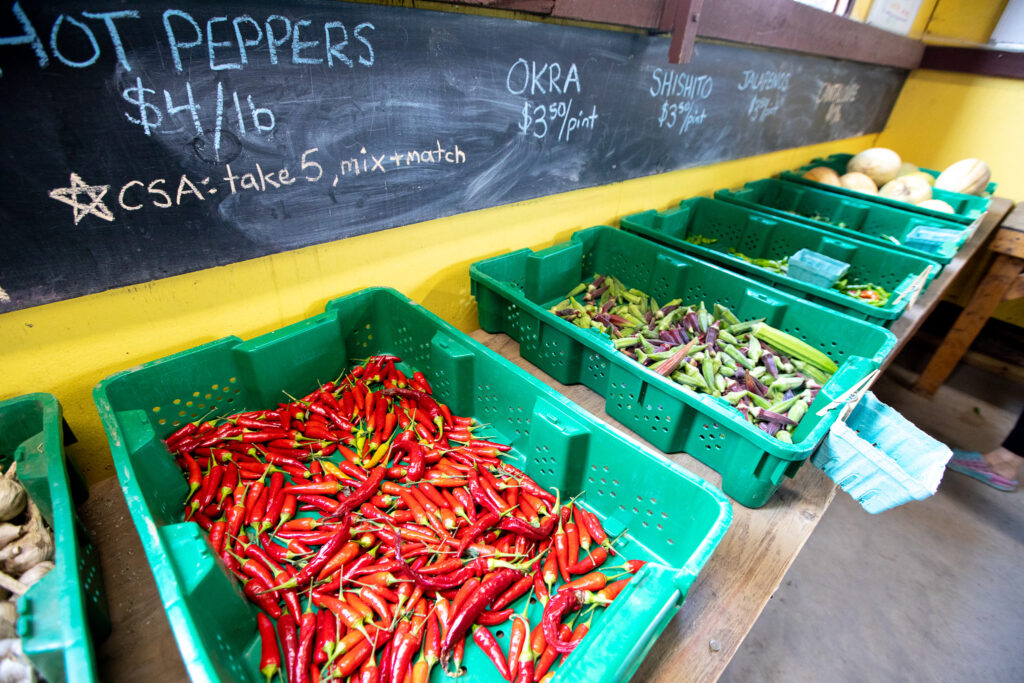
CSA pickups take place on the farm itself, but farms frequently set multiple pickup locations for better convenience. For example, CSA members may be able to collect their share at a farmers’ market where the farm sets up each week.
Some programs offer to deliver CSA shares directly to homes within a certain distance of the farm. However, this service usually comes with an extra fee.
What happens if I miss a pickup?
Farmers sometimes offer to hold on to your share to pick up at your convenience if you are unable to make one of the scheduled pickup dates. However, some warn that this option is not available due to busy schedules or concerns about the perishability of the share.
If you are on vacation or otherwise know you’ll miss a scheduled date, you can arrange to have someone else pick up the share instead. Alternatively, farmers may arrange to give you a double share at your next pickup.
If no arrangements are made, unclaimed shares are usually donated to a local charitable organization.
Is a CSA cost-effective?
Yes! A CSA’s upfront cost typically translates to about $25 to $50 per week during the harvest season. CSAs are designed to, at a minimum, offset the produce purchases you would otherwise be making in the store.
However, members often find that they’ve received goods worth more than their initial payment by the end of the season. Farms use strategies such as basing their CSA costs on wholesale prices, discounting shares for early signups, giving CSA members regular discounts in their farm stores, and providing surplus shares during strong seasons to ensure that members get a good return on their investment.
How do I pay for a CSA?
Each farm has its own payment methods, but many accept cash, checks, and credit cards. A processing fee may be charged for credit card payments.
While traditional CSAs require the cost to be paid in full in advance, some programs have payment plans to spread the purchase over the season through regular weekly or monthly contributions.
In addition, some farms provide unique options such as scholarships, workshares, or even bartering to offset or cover the cost of a CSA share.
Can I use SNAP/EBT to purchase a CSA?
SNAP/EBT can be used to purchase a CSA, as long as certain requirements are met. The benefit can be processed through a SNAP-eligible farm or vendor, or through a SNAP-eligible farmers’ market. Only SNAP-eligible items can be included in shares given to those using this payment method.
Furthermore, SNAP/EBT rules require that prepaid items must be received within 14 days. SNAP/EBT also cannot be used to pay for items bought on credit, or to pay for certain costs associated with operating a CSA, including taxes, down payments, and administrative, delivery, or membership fees.
While these rules prohibit the use of SNAP/EBT funds to make an upfront payment, they do require that farms follow certain steps to abide by these rules. People using SNAP/EBT may need to sign a written agreement committing them to the CSA. These agreements are meant to establish a clear understanding that a portion of the recipient’s SNAP/EBT benefits will go toward the CSA, and that the recipient is responsible for picking up their share. Participating farms may also require an upfront deposit using non-SNAP funds.
Some farms have established their own programs to provide CSA shares to low-income families in their communities. These programs may use donations from the community to cover the cost of a share, or offer shares at reduced rates to qualifying families.
What are the risks of signing up for a CSA?
Farmers acknowledge that there are certain risks to signing up for a CSA. Shareholders get a portion of the farm’s harvest, and shares will not be as robust if the farm is affected by drought, disease, or other factors leading to a diminished crop.
However, farms take several steps to minimize this risk. These include providing a limited number of shares, giving CSA members first priority in receiving produce, planting a surplus crop, and supplementing undersized shares with items from partnering farms.
Shareholders must also be prepared to regularly pick up and use their shares in order to get the best value from their purchase. Since a CSA purchase commits a shareholder to the full season, refunds are typically not available if you decide partway through the season that you no longer want to participate.
How do CSAs support CT Grown farmers?
The key benefit CSAs provide to farmers is cash flow during the winter months, when they are typically relying on revenues from the previous year’s growing season. The money provided through CSA purchases helps cover costs like seed and equipment purchases as well as the spring’s startup labor costs.
By communicating with their members about their preferences, farmers can anticipate the market demand in the upcoming season. This, in turn, can guide their decisions on what to grow and how much to plant.
CSAs also help to both minimize and distribute the risks associated with agriculture. By allowing a stronger cash flow during the winter, they help farmers start the growing season strong. And by having many people invest in a year’s crop, CSAs also ensure that a less productive year is not financially crippling for the farmer.